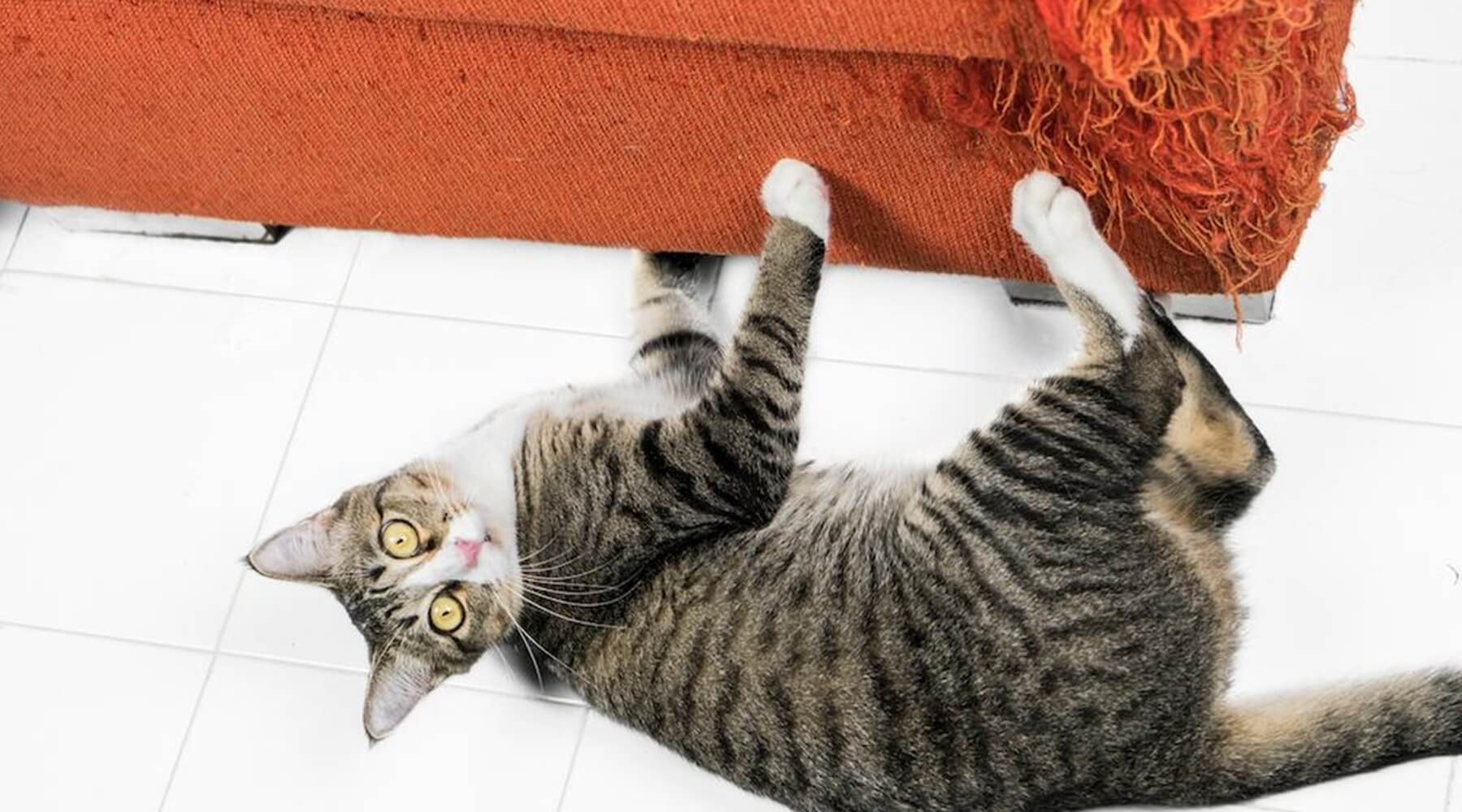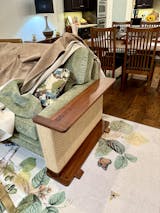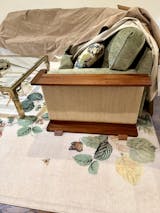If you're here, chances are you've got a kitty who sometimes mistakes your furniture for a scratching post. We've all been there – you walk in the door, and BAM! Your couch, your favorite chair, maybe even that pricey rattan piece, or your bed looks like it’s been through a battle.
Depending on how bad the damage is, you might be able to fix things up.
In this post, we're going to talk about some simple ways to fix those scratch marks and get your furniture looking good again.
Why Does My Cat Scratch My Couch?
Before fixing the damage, it helps to understand why it happens. Scratching isn’t “bad” behavior - it’s instinct! Cats scratch to:
-
Stretch and exercise their muscles.
-
Shed claw sheaths and keep claws sharp.
-
Mark territory with both scent and scratch marks.
-
Relieve stress or boredom.
If your cat is scratching the couch, they may just need more playtime or a scratching option they love (like sisal posts or mats).
How to Repair Cat Scratches on a Fabric Couch
So your cat has damaged your fabric sofa? Let's take a look at the damage and get right into how you can potentially fix it!
-
Trim loose threads around the scratch carefully.
-
Use a fabric shaver or scissors to neaten frayed fibers.
-
Apply fabric glue or upholstery repair adhesive to stop unraveling.
-
For deeper damage, use an upholstery patch kit that matches your couch color and texture.
-
If the damage is small, a fabric marker can disguise scratch marks.
- Prevent further damage by using a Cat-e-Corner against your sofa.
👉 For big areas, sometimes reupholstering or using a slipcover is the simplest fix.
How to Repair Cat Scratches on a Leather Sofa
If your sofa is leather, there's a bit of a different approach!
-
Clean the leather with a mild cleaner to remove dirt and oils.
-
Check the scratch depth. Light scratches may buff out with leather coloring balm or cream.
-
Use a leather repair kit for deeper damage. These typically come with backing material, a small spatula, and a colored compound to fill in the damaged leather.
- Follow the instructions on the leather repair kit to ensure it's properly executed.
- As with a fabric sofa, use a Cat-e-Corner to cover up past damage and prevent future damage!
Remember, fixing leather takes a bit of time and care. Take it slow, watch some YouTube videos, and ask for help if you need it. It will be worth it!
Are Cat Scratches on a Sofa Fixable?
Fixing the damage done to a sofa by your cat depends on how bad the damage actually is. Lighter damage can usually be repaired, but deep gouges are tough! The best way is always prevention. The Cat-e-Corner helps prevent the damage, so you never have to repair it!
How to Keep Cats’ Claws Off the Couch
Fixing scratches is great, but stopping them before they start is even better. Try these to keep your cat's claws off of the couch:
-
Provide alternatives: Several sturdy sisal scratching post or mats around the house is the first step to preventing unwanted scratching.
-
Redirect with play: Tired cats scratch less out of boredom. Provide plenty of playtime!
-
Trim claws regularly or consider soft claw caps if all else fails.
-
Furniture solutions: Products like Cat-e-Corner (a couch-side scratcher/side table) protect your sofa while giving cats a satisfying spot to scratch.
- Redirect to the proper scratcher: If your cat decides to take things out on your sofa, always redirect by moving them to the proper scratcher. Use positive reinforcement - cats do not respond well to punishment.
FAQs About Cat Scratches on Furniture
Q: Can I buff out scratches from my leather couch without a kit?
Yes, mild scratches may fade with leather conditioner or oil, but deeper ones usually need filler and dye.
Q: What’s the best material couch if I have cats?
Microfiber and tightly woven fabrics are more scratch-resistant. Leather can also be durable if maintained.
Q: Will declawing stop my cat from scratching?
Declawing is inhumane and not recommended. Instead, train and redirect scratching behavior.
Q: How do I protect my couch if my cat won’t stop?
Use furniture covers, corner guards, or products like couch-side scratching tables to redirect their behavior safely.
Final Thoughts
Scratches on your couch don’t mean the end of beautiful furniture. Whether you’re learning how to repair cat scratches on a fabric couch or fixing up a leather sofa, a little care goes a long way. Pair repair with prevention, and you can enjoy a scratch-free sofa and a happy, healthy cat.








